The Roman Empire began in the 8th century, founded by Emperor Romulus before growing into one of the wealthiest nations in the world. At its peak, the population of the Roman Empire was over 90 million, roughly 20% of the world’s population. It spanned from Italy throughout the Mediterranean and was known for its art and stunning architecture.
However, the Roman Empire also had a dark side, a period of time where emperors committed horrific acts, the Senate ruled with an iron fist and the Christians were persecuted for their faith. Wars were rampant when the Roman Empire was at its prime, with a conflict with the Persians lasting over 700 years.
Political conflicts would also create rifts of distrust between the people and the government, eventually leading to the empire crumbling to the Turks after 1,500 years.
While we know the basics of the Roman Empire thanks to the history books, there are so many facts about this fascinating civilization that you may not be aware of. These select 40 are not the only interesting facts about the Ancient Romans, but here at FunnyAnd, we believed they stood out the most. Check them out, we promise some will leave you speechless!
40. Julius Caesar Cared for His People
While he may have been a very calculated ruler, Julius Caesar did care for the citizens of Rome deeply. After his death, he left what would be the equivalent of $270 to each Roman citizen.

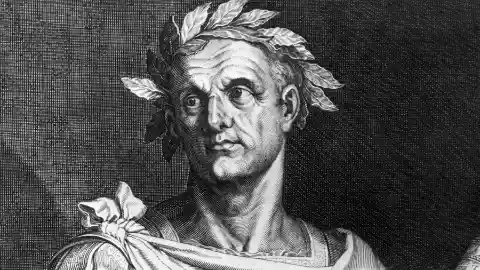
Although this may not seem like a lot to us today, back then this was a huge financial help to those living in poverty.
39. One of the First Fantasy Novels
Recently, historians discovered a fantasy novel that was written in 2 AD by a Roman living in Syria. The novel featured concepts that were far ahead of its time, with explorers flying to the moon, as well as alien encounters.


There were also epic plot lines of an interplanetary war, as well as the discovery of North America. Is it possible this guy was a prophet? Could someone have gone back in time? It’s amazing someone could come up with such ideas back then.
38. A Most Peaceful Reign
One of the calmest periods of time during the Roman Empire was under the rule of Emperor Antoninus Pius from 86CE to 161 CE.
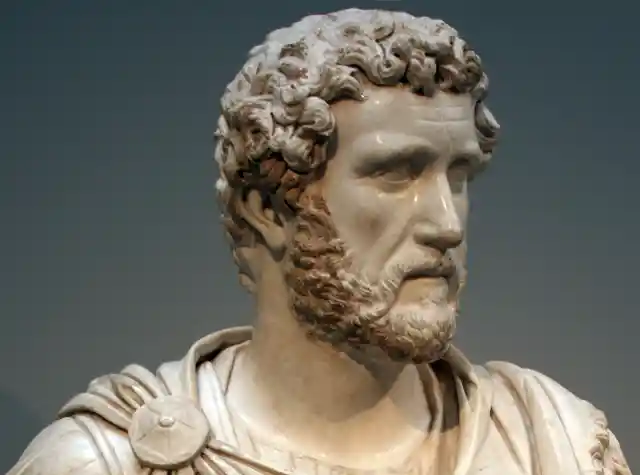

During this time, historical records detail no major conflicts or events. This may have been due to Pius’s ability as a skilled administrator and effective methods of governing.
37. The Floating Bridge
At one point, someone told Roman Emperor Caligula that he had “no more chance of becoming emperor than riding a horse across the Bay of Baiae.”
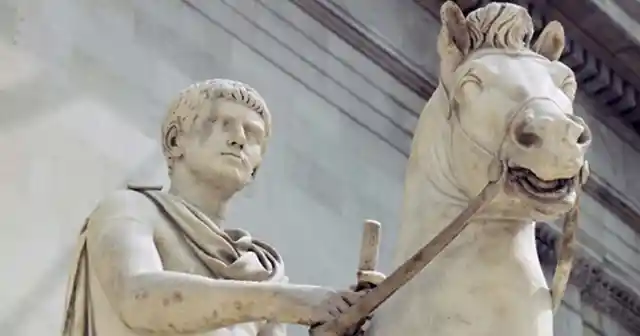
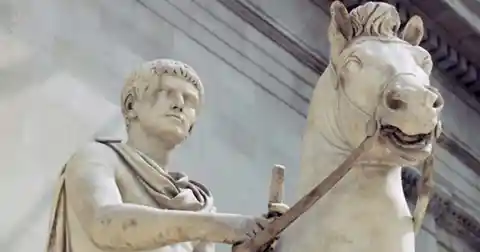
Not one to ignore a challenge, Caligula built a temporary floating bridge that extended more than two miles across the river. He then proceeded to walk his horse across it. Take that, sir!
36. Murder and Mayhem
While there were periods of peace during the days of the Roman Empire, it was also a time of murders, political espionage, and chaos. Emperor Pertinax only ruled for three months from January 193 to March 193 before being murdered by his imperial bodyguard.
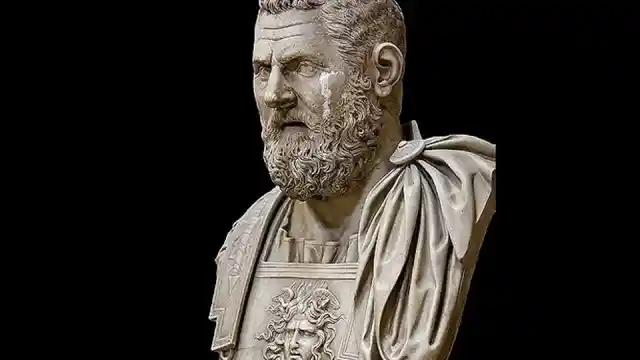
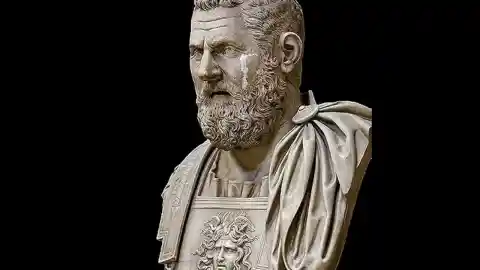
The empire was then auctioned off to the highest bidder with Didius Julianus succeeding him. This would trigger what was considered the rocky “Year of the Five Emperors.”
35. Too Much Is Not A Good Thing
The Romans held a strict belief that eyelashes fell out due to excessive intercourse; therefore, women would use a variety of cosmetics to make their eyelashes appear fuller and longer.


This was also a symbol of chastity among the women of Rome, which made them more desirable to men.
34. Conspiracy Theories Run Amok
During an unsettled time when the Roman Senate was debating the possibility of conspirators taking out Caesar, Caesar received a note during the proceedings.
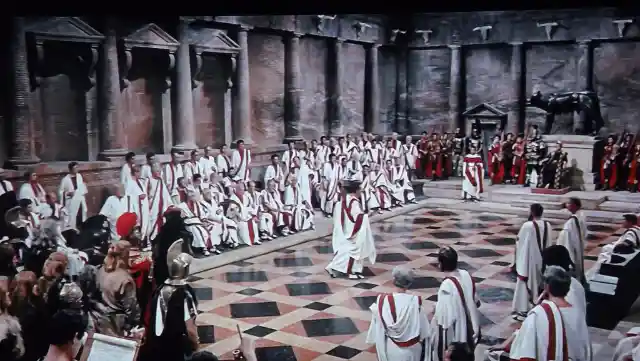

Cato, a Senator who opposed Caesar accused him of working with the conspirators and demanded the note to be read out loud. Caesar obliged, revealing a love note from Cato’s sister. Oops.
33. The Best of the Litter
When it came to choosing the best puppies out a litter, the Ancient Romans had quite a cruel tactic. They would surround the puppies with a ring of oil and then set it on fire.


The mother dog would then jump over the flames and rescue the puppies one-by-one. It was believed by the Romans that the order she rescued the puppies in proved which were the best.
32. Blondes Don’t Have More Fun
After the Romans raided France and Germany, they brought back many women as slaves. The Roman women were jealous of their blonde hair and tried to dye it to achieve the look.
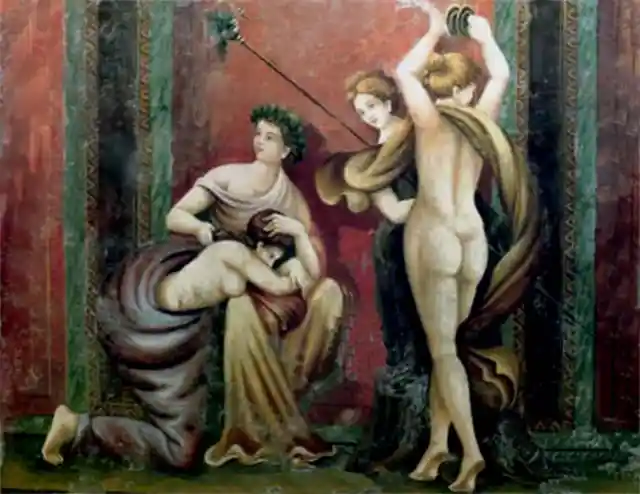
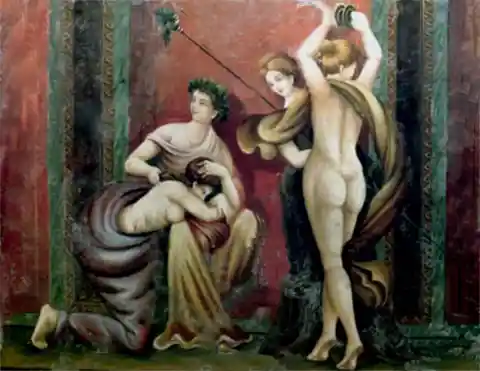
Unfortunately, their hair fell out from the process. Therefore, the women cut off the slaves’ hair and turned it into wigs they could wear.
31. An Effective Birth Control Method
The Ancient Romans were avid supporters of birth control. In fact, they had an herb that was so effective at preventing pregnancies they ended up over-harvesting it.


Soon, the herb no longer grew and became extinct. It’s too bad, we could use more all-natural birth control methods today.
30. The Everlasting Architecture
The Roman Empire is known for some of its absolutely stunning architecture and the Pantheon is no exception.
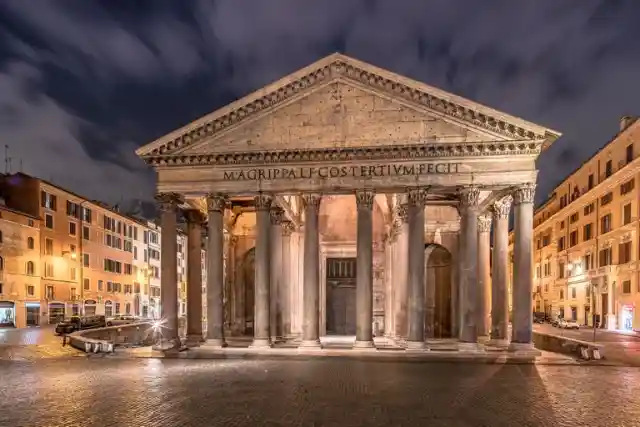
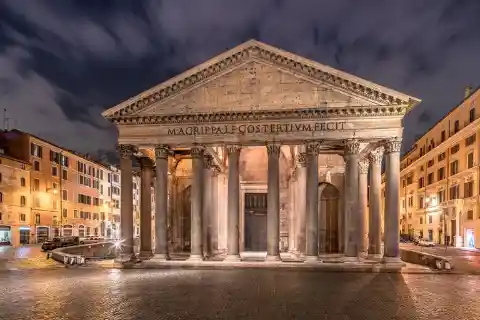
Constructed in 118 AD, the Pantheon to this day is the largest unreinforced concrete dome in the entire world. Think about that for a second, no other structure has come close to its perfection in thousands of years. Pretty awesome, right?
29. Suicide by Petition
The Roman Empire handled suicide much differently than today. Most people who want to commit suicide simply do it, but back then if you wanted to take your life you had to apply to the Senate via petition.


If the petition was approved, the person would be given a free dose of hemlock, a highly toxic herb that resulted in respiratory paralysis.
28. Hardcore Training
Those who wished to join the Roman legionary were put through arduous training. Most of the training involved regular marching for 18-miles in a 5-hour timespan.
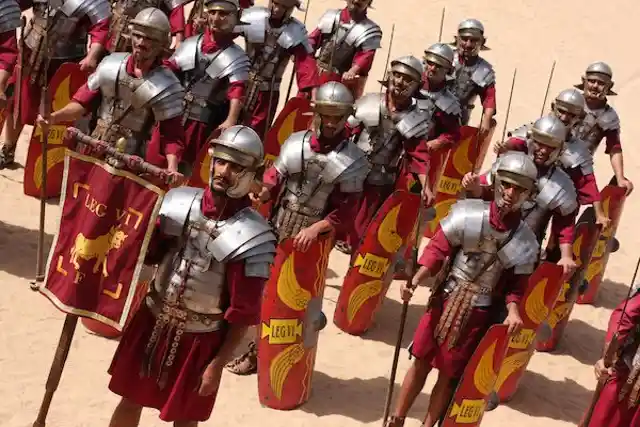
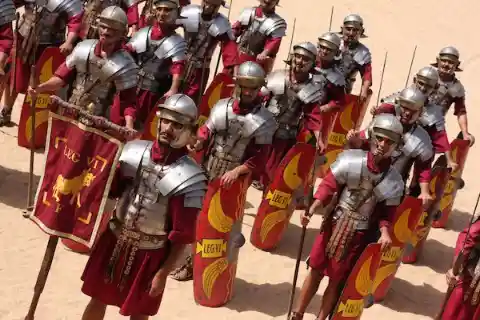
They then had to speed march for 21-miles in a single day. Of course, this was all while carrying 45 pounds in a backpack and their armor which was roughly 20 pounds. We think we’d fail miserably.
27. Hell Hath No Fury Like a Woman Scorned
Celtic Queen Boudica led a successful uprising against the Romans in 60 AD. An act of revenge after Rome annexed her kingdom and publically flogged her, Boudica’s army was able to level three cities and kill over 80,000 Romans.


It took three legions to take her down. It is rumored that Boudica killed herself in order to avoid capture, though some historians believed she died of an illness.
25. A Brutal Slaying
The Roman Senate was known for their harsh judgments and strict rule. At one point a Roman politician and 300 of his supporters were brutally beaten to death with clubs. Why?
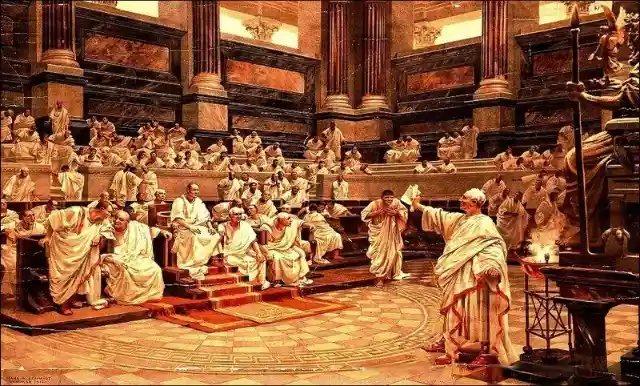
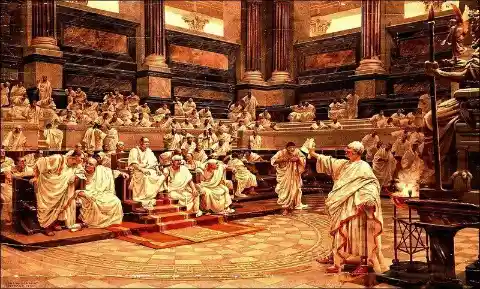
They were trying to redistribute land to the poor that had been acquired illegally by wealthy landowners. As you can see, the rich didn’t take to kindly to this and with the Senate in the wealthy’s back pockets, the politician never stood a chance at success.
24. Origin of Cereal
Here at FunnyAnd, we love cereal, so we were certainly intrigued when we discovered that the origin of the word “cereal” was derived from the Roman goddess Ceres.
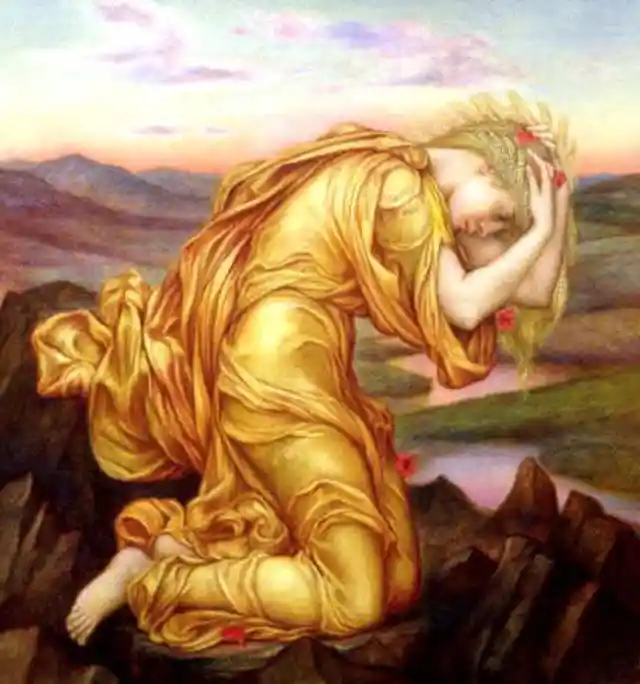
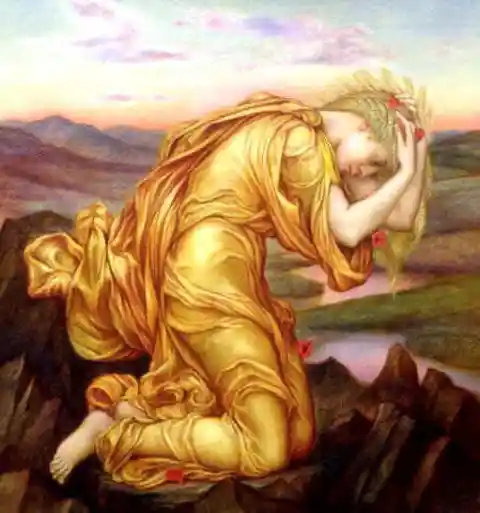
This was due to her association with edible grains. Who knew?
23. Romans vs. Christians
The Romans despised those that identified as “Christians” often identifying them as atheists because they refused to pray to their gods.
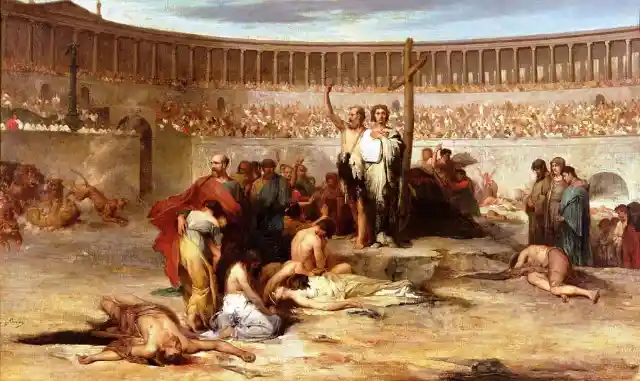
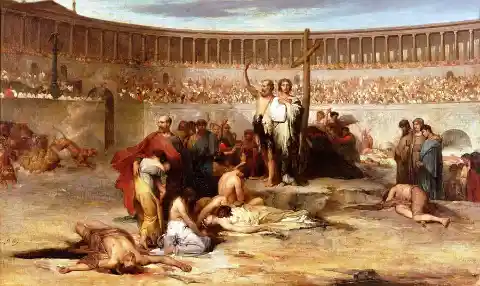
The persecution of Christians occurred for a period of two centuries, where many were publically slaughtered as a form of sport. It would begin with the Great Fire of Rome in 64 AD and lasted until 313 AD when Emperor Constantine legalized the Christian religion.
22. An Inspirational Find
In the 15th century, a young Italian accidentally fell into the side of a hill, discovering the ruins of the Domus Aurea, an enormous Roman palace filled with exquisite art.
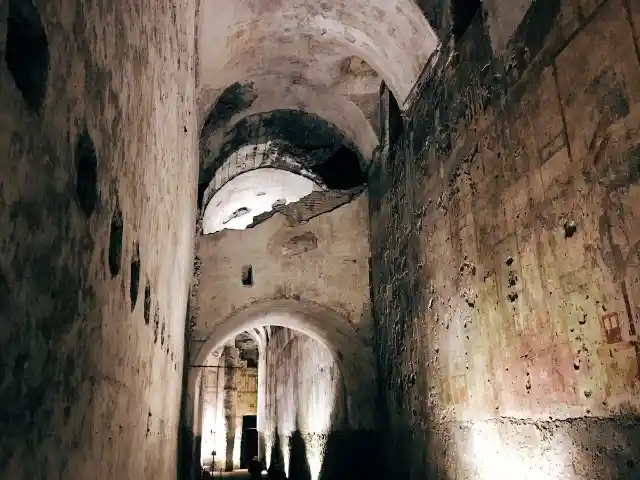

Both Michaelangelo and Raphael would visit this buried treasure trove, which would go on to inspire many of their pieces of art. Unintentionally, this would mark the beginning of the Italian Renaissance.
21. The Broken Cup Incident
Roman Emperor Augustus was known to be a kind ruler who cared for his people, so when he saw a man trying to feed his slave to lamprey eels as a punishment for breaking a cup, he immediately intervened.
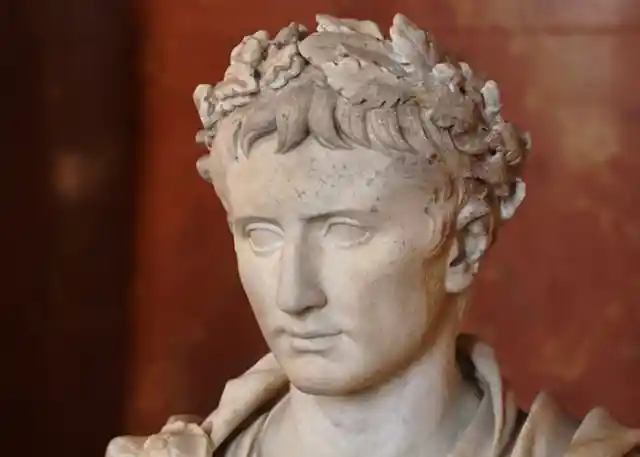
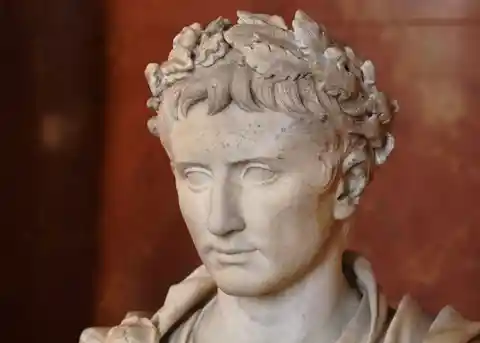
Not only did Augustus free the slave, but he ordered all of the man’s cups to be broken. Talk about instant karma.
20. Old School Party Drugs
The Romans were known for their lavish parties and this included enhancing the experience with drugs. During that time, there was a fish known as the Sarpa Salpa, also known as the “dream fish.”


When eaten, this fish would trigger extreme hallucinations that lasted for over 36 hours. It was considered a delicacy and usually served at parties for those of status within the Roman Empire.
19. False Accusations Had Consequences
Prosecutors had to be very careful when bringing accusations before the court. If a prosecutor knew the accusation was false yet still moved forward and lost the case, he would end up being branded with a “K” on his forehead.


This was used to discourage false claims being brought before the court and taking up its time.
17. Worth Its Weight in Gold
Gaius Gracchus was a politician in Ancient Rome who had a bounty placed on his head with the price being his head’s weight in gold. This was due to the fact his reformative policies he enacted while in office triggered a constitutional crisis.


Gracchus proved hard to track down after he fled the city, but was eventually tracked down in a grove where he had already committed suicide. His head was removed a delivered to the Senate, but the bounty in gold was never paid. This was due to the discovery that Gaius’s brain had been removed and replaced with molten lead.
16. Yin and Yang
Many people believe that the ‘Yin and Yang’ symbol derives from Asia, but it was actually a shield design from the late Roman Army.
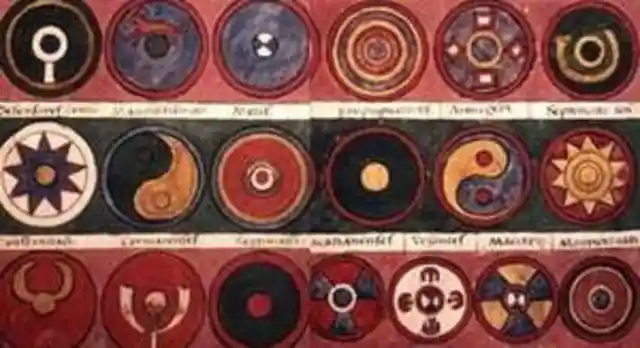
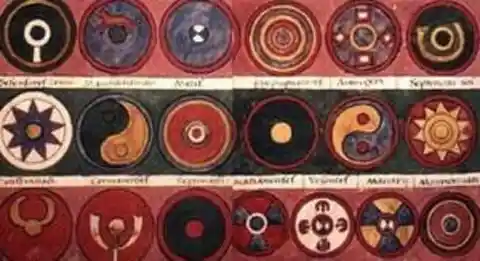
This would predate the symbol from the Taoist representations by over 700 years. What’s interesting is that there is absolutely no connection between the Taoist and Roman depictions of the symbol.
15. The Last Stand
The last Roman Emperor was Constantine, with the empire falling to the Turks. After this occurred, Constantine removed his Imperial regalia before leading his men into one final stand against the Turk armies.
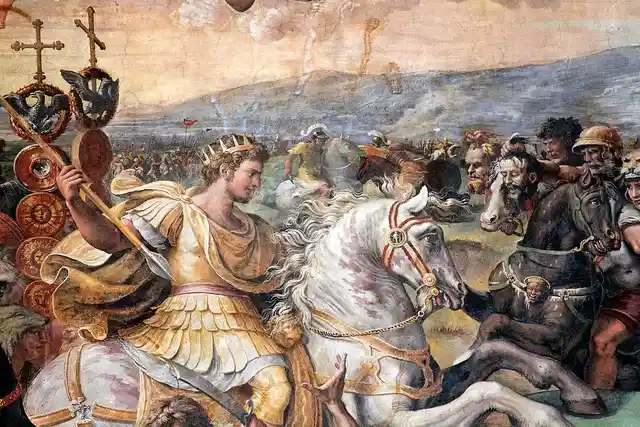
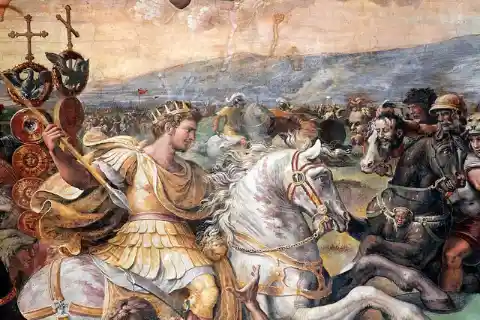
Without his regalia, Constantine would have been difficult to identify among the dead. It’s believed he was buried in a mass grave with the rest of his fallen men.
14. The Original Whoopee Cushion
The original whoopee cushion was designed by Emperor Elagabalus at the young age of fourteen. Known as Rome’s “Decadent Boy Emperor” he was brought into power in 218 AD in an attempt to maintain the Antonine rule.
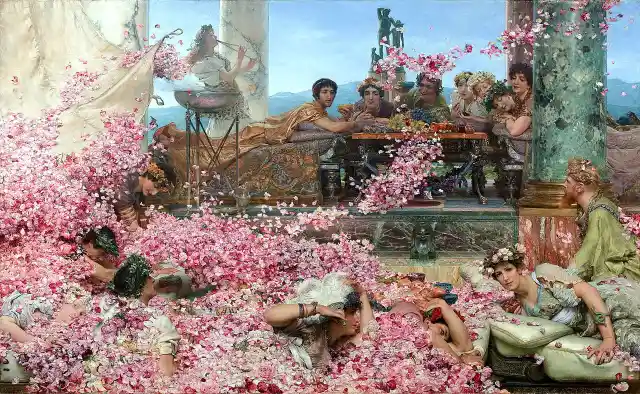
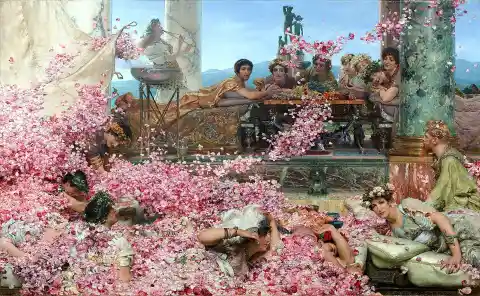
He would often use his prototype whoopee cushion on guests at his dinner parties, as well under the seats of high-ranking officials. To say his reign was one big joke would be an understatement.
12. Not the Largest Empire in History
Despite how well-known the Roman Empire is throughout history, it is not the largest empire to have ruled. In fact, it’s only the 28th largest empire.
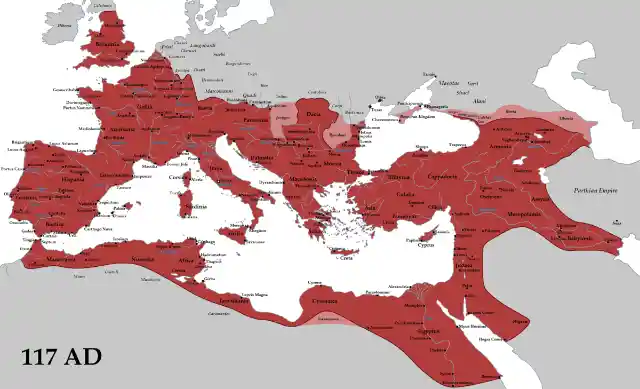
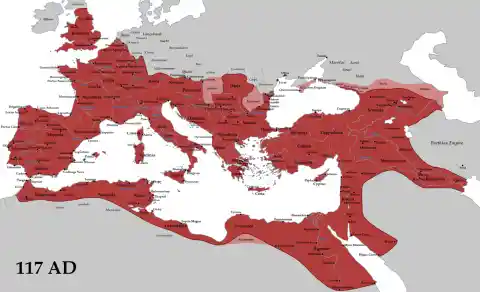
The top three largest empires throughout history were the British Empire, the Mongol Empire, and the Russian Empire. The Russian Empire only had a maximum land area of 1.93 million compared to the British which was 13.3 million.
11. The First Apartment Buildings
In the Roman Empire, apartment buildings were quite common in housing its excessive population. Some of the buildings were over nine-stories high, with the upper levels being more cramped due to the rent being cheaper.
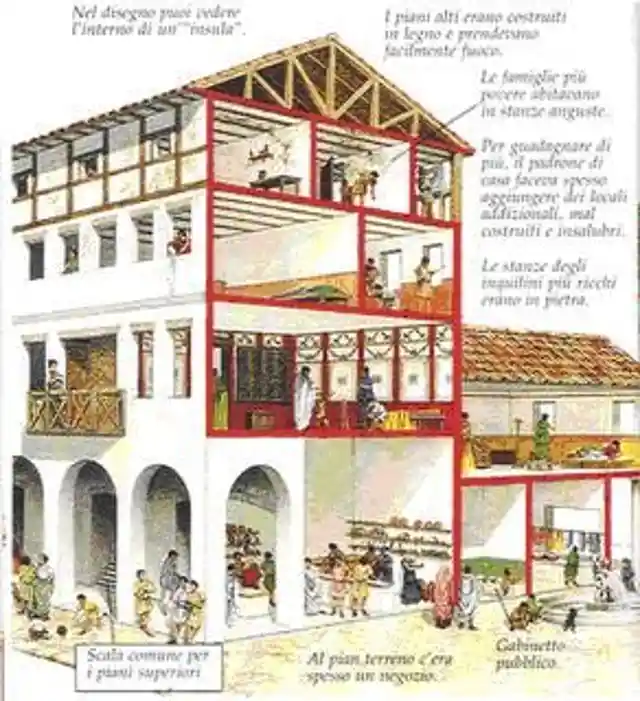

As for the lower floors, they were reserved for the wealthy and included spacious floorplans, running water, indoor bathrooms and sometimes heating.
10. A Roman Delicacy
The Romans loved to experiment with new dishes, especially for those who were considered royalty.
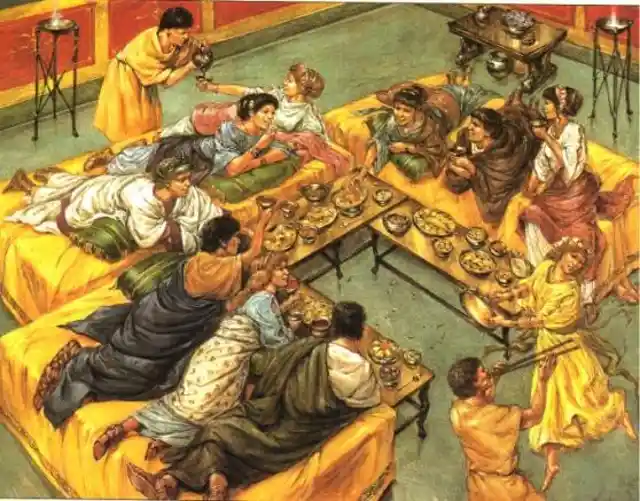
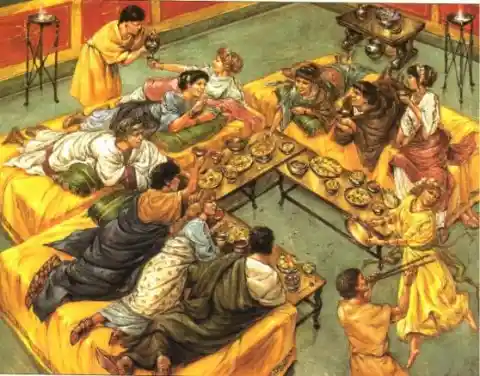
One dish that was quite popular at the time was roasted chicken that was stuffed inside a duck, which was then placed inside a goose that was stuffed into a pig and then stuffed into a cow. We can’t imagine how many bites it took to get to the center of that!
9. Battle of Cannae
The Battle of Cannae is considered one of the bloodiest episodes in Roman history, taking place between Rome and Carthage.
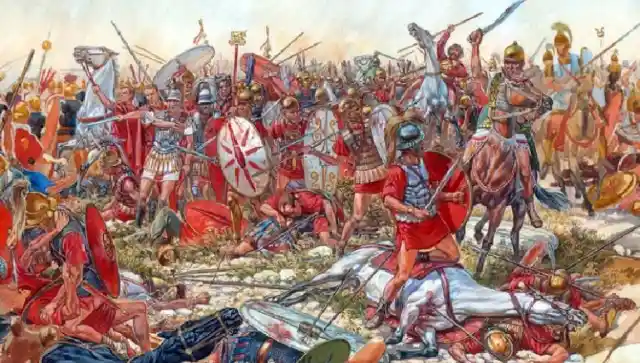

The battle, which took place in 216 BC, was responsible for the highest loss of human life in a single day throughout all of history. It is estimated that the Romans lost over 40,000 men during the battle, which equaled out to be somewhere between 5-10 percent of the entire Roman male population.
8. The Beards of Classification
The philosophers of Ancient Rome were known for their wild theories and outlooks on humanity, but they all came from different schools of thought.
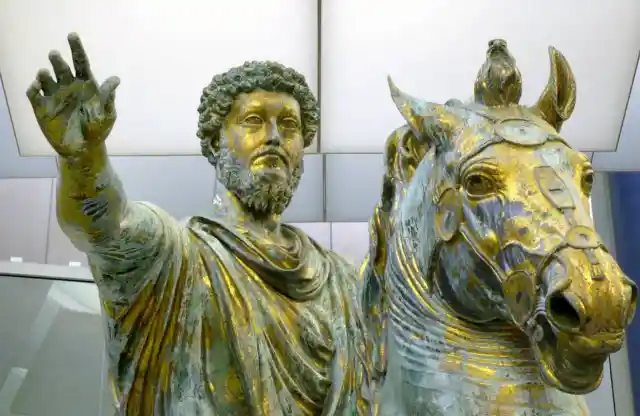
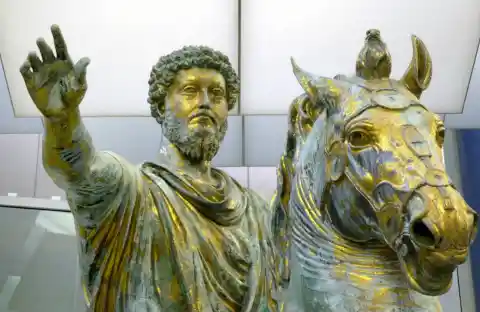
In order to easily identify which school of philosophy each philosopher identified with they would all have different beard styles. We guess that’s one way to do it. Although, what if someone belonged to two schools of thought? Did they split the style of beard in half?
7. The Carthage Threat
One Roman senator who believed Carthage was the greatest threat to the Roman empire, ended all of his speeches with “And, further, I think that Carthage should be destroyed.”
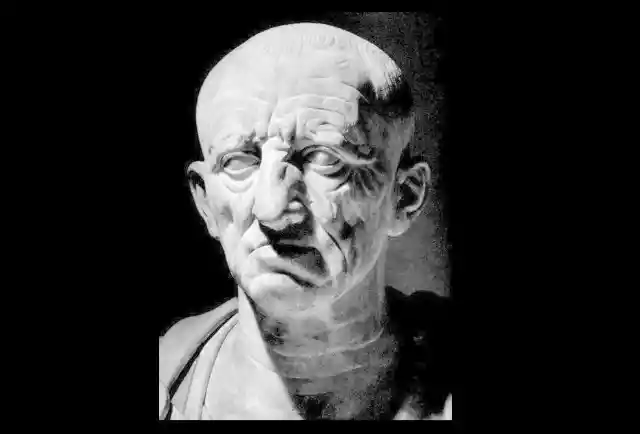
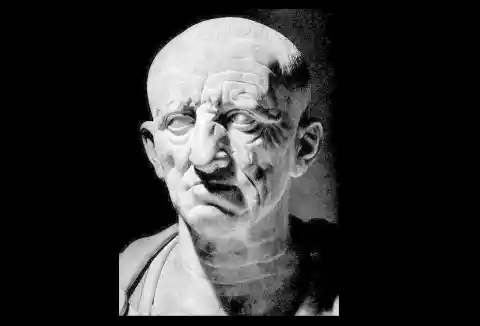
The senator was Cato the Elder and he was one of the few who spoke out against Carthage repeatedly. Of course, Carthage would later show itself as a huge threat in the Battle of Cannae, leading to a large death toll for the Roman army.
6. The Very Beginning
The ancient Roman Civilization began on the Italian peninsula during the 8th century. It was founded by Romulus in 753 BC and would grow into a powerful empire known for its culture and extreme wealth.

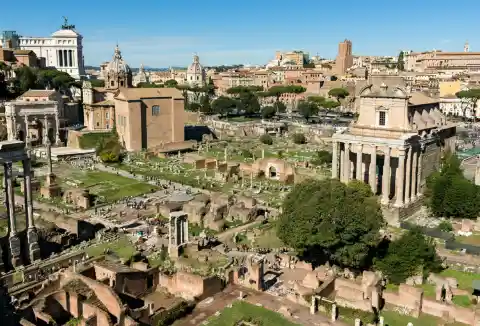
As the empire grew, it would soon acquire lands around the Mediterranean, and a large swath of Europe, which included England, Wales, and Scotland.
5. The Festival of Saturn
The Ancient Romans held the festival known as Saturnalia every 17th of December in honor of the deity Saturn. The festivities would later extend to the 23rd of December.
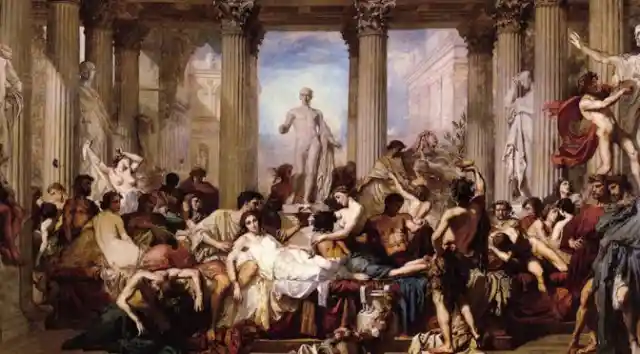
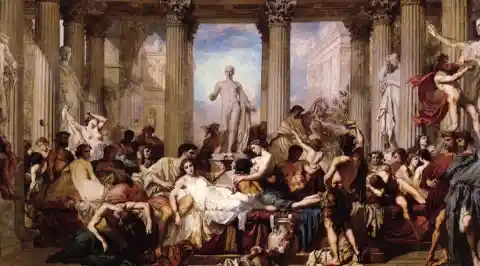
During the festivities, the masters and slaves would reverse their roles, where the slaves enjoyed freedom for a short period of time. The poet Catullus once stated the festival was “the best of days.” We’re guessing for the masters…not so much.
4. A Relaxed Way of Eating
The Romans were known for their love of food and they considered it one of life’s greatest pleasures. Most enjoyed eating while lying down on couches and they used their hands instead of utensils. In fact, the only utensil they used was a spoon.
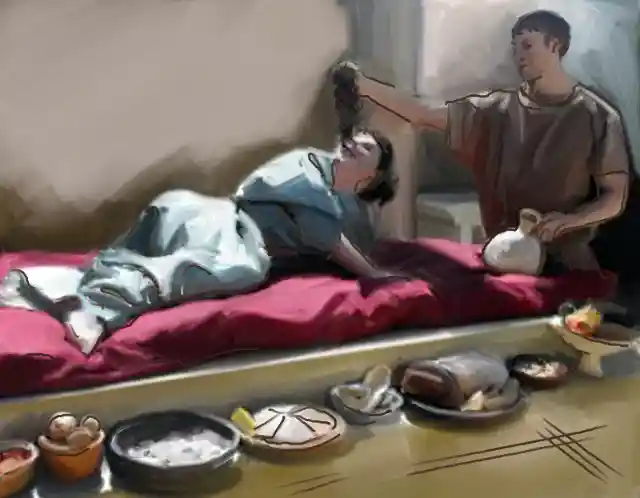
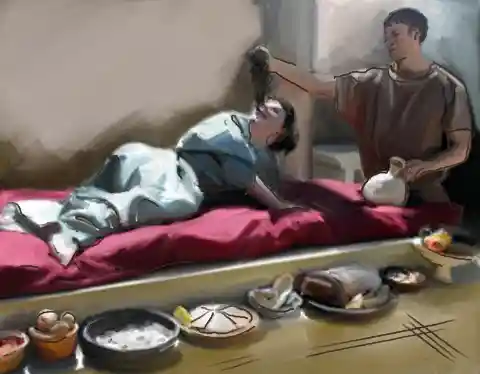
Many of the rich Romans enjoyed exotic foods like stork and roast parrot. Some would even eat flamingo. We’ll pass on that, thanks.
3. God of the Latrine
It’s been alleged that the Romans worshiped the god Crepitus as an official “toilet god” who was also the god of flatulence. Although concrete documentation is hard to come by, it’s believed that the Romans invoked the god if a person was suffering from diarrhea or constipation.

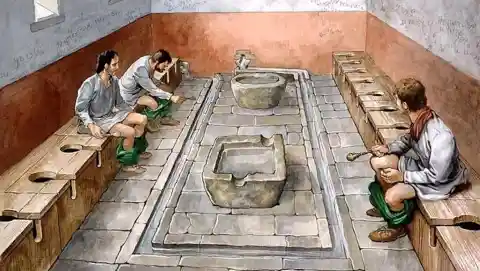
Seeing as most of the lavatories were communal in Rome, we’d hate to have to sit next to someone invoking this particular god.
2. Roman Women Beauty Secrets
The women of Rome used a multitude of beauty regimes to keep up appearances. In fact, they believed the sweat from the gladiators helped enhance the complexion and would collect it to wash their faces.
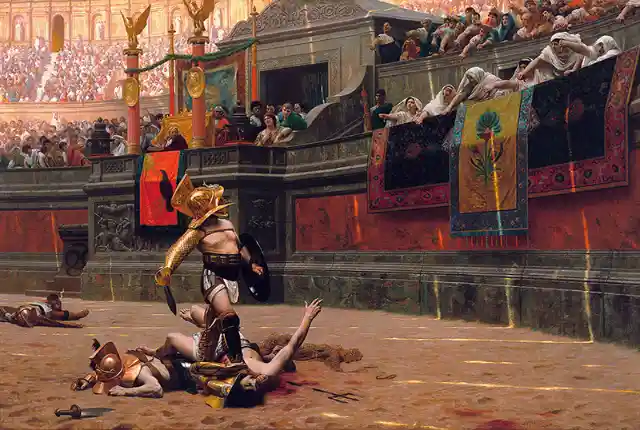
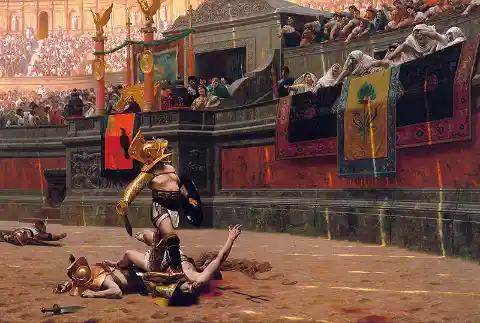
We can’t imagine how wonderful that smelled. Personally, we think a few wrinkles never hurt anyway. Hold the sweat, please!
1. Early Roman Mall
The Trajan’s Market is considered to be an early version of a mall. It’s a large complex of ruins in Rome that’s located opposite the Colosseum. Historians believe that many of the rooms were utilized as administrative offices for Emperor Trajan.
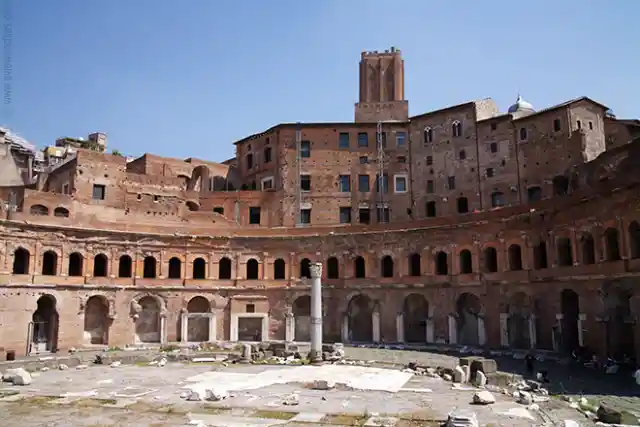
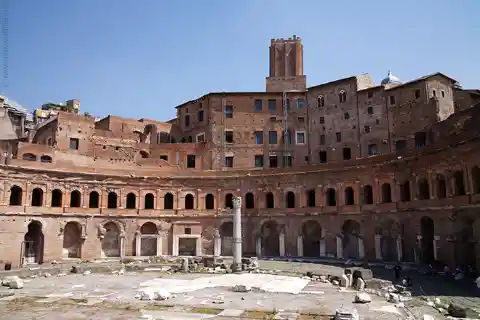
There were also shops and apartments within the many levels of the structure. If you’re interested in touring the area, some of the levels are still open to the public for visitation.